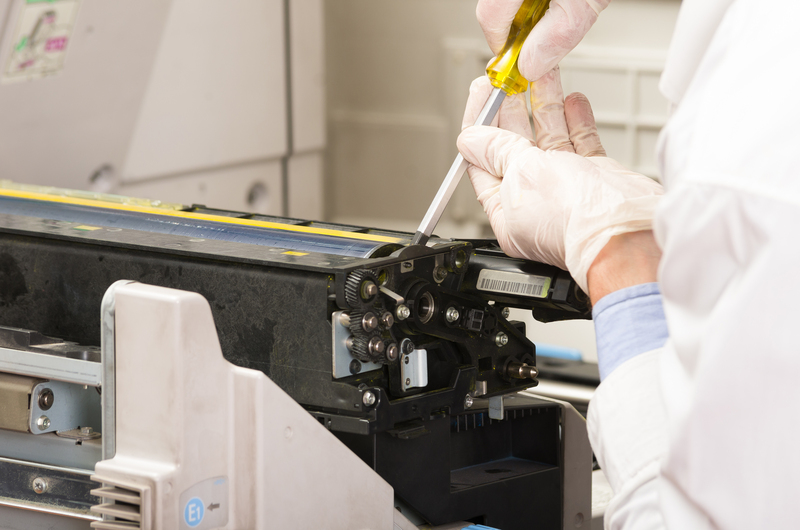Addressing the Challenge of Microplastic Pollution: An In-Depth Guide
Microplastics have emerged as one of the most concerning environmental challenges of the 21st century. As tiny particles less than 5mm in size, these pollutants are found virtually everywhere: in our oceans, air, soil, the food we eat, and even the water we drink. The continued presence and proliferation of microplastics pose a serious threat to ecosystems, wildlife, and human health. This comprehensive article explores the causes, impacts, and innovative solutions for addressing the challenge of microplastic pollution.

What are Microplastics?
Microplastics are small fragments or fibers of plastic that result from the breakdown of larger plastic waste, as well as from direct sources such as microbeads in personal care products. These pollutants are persistent in the environment and are notably difficult to remediate due to their size and ubiquitous nature.
- Primary microplastics: Produced intentionally for commercial use, such as in cosmetics and cleaning products.
- Secondary microplastics: Generated from the degradation of larger plastics in the environment due to factors such as sunlight and wave action.
Because of their minute size, microplastics easily evade standard filtration systems and frequently end up in waterways and food chains. This is why combating microplastic contamination requires a multifaceted strategy.
The Scale of Microplastic Pollution
The global impact of microplastic contamination is staggering. It is estimated that there are trillions of microplastic particles floating in the world's oceans, not to mention similar pollution in freshwater bodies and terrestrial environments. Sampling has detected microplastics on remote mountaintops, in polar sea ice, and even in rainfall, highlighting their widespread distribution.
- Oceans: The most well-documented sink for microplastics, affecting all levels of marine life.
- Soil: Agricultural practices using plastic mulch or sewage sludge introduce microplastics into soils, threatening crops and soil fauna.
- Atmosphere: Wind and weather conditions transport microplastics over vast distances, causing them to settle in unpredictable locations, including remote and pristine environments.
The omnipresence of microplastics prompts urgent research and active measures to address microplastic pollution at both local and global scales.
Sources of Microplastic Pollution
Consumer Products
Cosmetics and personal care products have long been recognized as contributors to primary microplastics. Microbeads in exfoliants and toothpastes, synthetic fibers in clothing, and microplastic ingredients in cleaning supplies all find their way into water systems through domestic waste.
Textile Industry
The fashion industry, particularly the proliferation of synthetic textiles such as polyester, nylon, and acrylic, is a major source of microfiber pollution. Each wash can release thousands of microfibers, which bypass conventional wastewater treatment and enter aquatic environments.
Plastic Waste Degradation
Improperly disposed of plastic bags, bottles, packaging, and other debris degrade under sunlight and physical stress, fragmenting into secondary microplastics. These particles persist in the environment for decades, threatening countless organisms.
Transportation and Infrastructure
Tire wear and tear, road markings, and paint chips are often overlooked yet significant sources of microplastic pollution. These particles enter stormwater systems and eventually contribute to microplastic burdens downstream.
Agricultural Practices
Agriculture introduces microplastics through the application of biosolids (treated sewage sludge) and use of plastic mulch films, which can break down and infiltrate soil ecosystems.
Impacts of Microplastic Pollution
On Aquatic Life
Studies have shown that numerous marine and freshwater species ingest microplastics, mistaking them for food. This leads to:
- Physical blockages and injuries in digestive systems
- Reduced reproductive success and growth rates
- Biomagnification of toxic chemicals up the food chain
Ecological Impact
Microplastic-laden ecosystems display disrupted food webs and altered nutrient cycles. The breakdown of plastics can release toxic additives such as phthalates and bisphenol A (BPA), further threatening species diversity and ecosystem resilience.
Human Health Risks
Humans are exposed to microplastics via seafood, drinking water, air, and even processed foods. Potential health threats include:
- Inflammatory responses and cellular damage
- Transportation of pathogens on plastic surfaces
- Accumulation of endocrine-disrupting chemicals
While more research is needed to fully understand the extent of these risks, there is growing consensus in the scientific community that addressing microplastic pollution is crucial for safeguarding public health.
Current Strategies for Addressing the Challenge of Microplastic Pollution
Policy Interventions
- Bans and Regulations: Many countries have already banned microbeads in cosmetic products, while others are moving toward stricter regulations on single-use plastics and plastic packaging.
- Extended Producer Responsibility (EPR): Regulations that require producers to manage the lifecycle of their products, encouraging eco-friendly design and better waste management practices.
- International Cooperation: Agreements such as the UN Environment Assembly resolutions promote global action, data sharing, and harmonized standards to tackle microplastic pollution collectively.
Innovative Technologies
- Advanced Filtration Systems: Upgrading wastewater treatment plants with membrane filtration and microplastic capture technologies can intercept particles before they enter watercourses.
- Biodegradable Materials: The development and adoption of alternatives to conventional plastics, such as bioplastics, reduce the introduction of persistent microplastics into the environment.
- Ocean and River Clean-Up Initiatives: Projects like The Ocean Cleanup are using booms and skimmers to remove microplastics and larger debris from aquatic environments, preventing secondary microplastic formation.
Consumer and Community Action
- Behavioral Change: Reducing plastic consumption, opting for natural-fiber clothing, and responsibly disposing of plastic waste are effective steps individuals can take.
- Education and Awareness: Campaigns and educational programs help to raise public understanding of the issue and inspire collective action.
- Participatory Clean-Ups: Community beach and river clean-ups reduce litter and increase local engagement in pollution prevention.
Innovative Solutions on the Horizon
Scientific research and technological advancements are driving new approaches to addressing microplastic contamination:
- Enzymatic Degradation: Engineered enzymes and microbes capable of breaking down plastics into harmless byproducts are in development, offering potential for bioremediation.
- Smart Clothing Filters: Devices like laundry balls and in-washer filters capture microfibers before they reach wastewater systems.
- Improved Packaging Design: Eco-friendly packaging made from rapidly degradable materials or natural fibers is gaining traction.
- Remote Sensing and Monitoring: Drone and satellite technology enable precise monitoring of microplastic distribution, informing targeted interventions and policy.
Material Innovation
Material scientists are developing plastics that are more easily broken down by microbes, or that degrade under normal environmental conditions without producing harmful residues. This could fundamentally change the nature of future plastic pollution and offer a sustainable alternative to current packaging and product materials.
Global Research Collaboration
International consortia and collaborative networks are sharing knowledge and resources to standardize microplastic measurement, accelerate solution development, and foster best practices worldwide.
How Individuals Can Help Reduce Microplastic Contamination
While systemic change is essential, individuals can make meaningful contributions to addressing microplastic pollution:
- Choose natural fibers: Opt for wool, cotton, or linen clothing over synthetic fabrics to reduce microfiber releases during washing.
- Limit single-use plastics: Use reusable bags, bottles, and containers instead of disposable plastics.
- Support eco-friendly brands: Patronize companies that prioritize sustainable practices and plastic-free packaging.
- Wash clothes less frequently and at lower temperatures: Gentle, less frequent washing helps minimize microfiber loss.
- Participate in clean-ups: Get involved in community efforts to remove plastic waste from local environments.
- Educate others: Spread awareness in your social circles about the dangers of microplastics and ways to mitigate pollution.

Policy Recommendations and the Road Ahead
Combating microplastic pollution requires layered responses:
- Government Enforcement: Implementation and enforcement of legislation to ban or limit microplastics in consumer goods, improve waste management, and hold polluters accountable.
- Corporate Responsibility: Industry adoption of clean production methods, switching to biodegradable materials, and transparent reporting of plastic usage.
- Research Funding: Increased investment in understanding microplastic toxicity, distribution, and long-term effects.
- Global Standards: Development of standardized monitoring and reporting measures to compare progress across borders and ensure accountability.
As awareness grows, international action is more cohesive. The UN's Global Plastics Treaty, still in negotiation, exemplifies international commitment to tackle plastic and microplastic pollution through holistic, enforceable policies.
Conclusion: Creating a Microplastic-Free Future
Addressing the challenge of microplastic pollution is a defining environmental imperative of our times. Prevention, innovation, and participatory action--across industry, government, and individuals--are the cornerstones for a cleaner, healthier planet free from microplastic contamination.
Winning this battle involves rethinking our dependence on plastics, investing in green technologies, and establishing strong policies. By making conscious choices and demanding systemic change, we each contribute to a solution that protects ecosystems, safeguards public health, and creates a sustainable future for generations to come.
Together, we can turn the tide against microplastic pollution and pave the way for a world where every breath, bite, and sip is free from plastic particles.
```